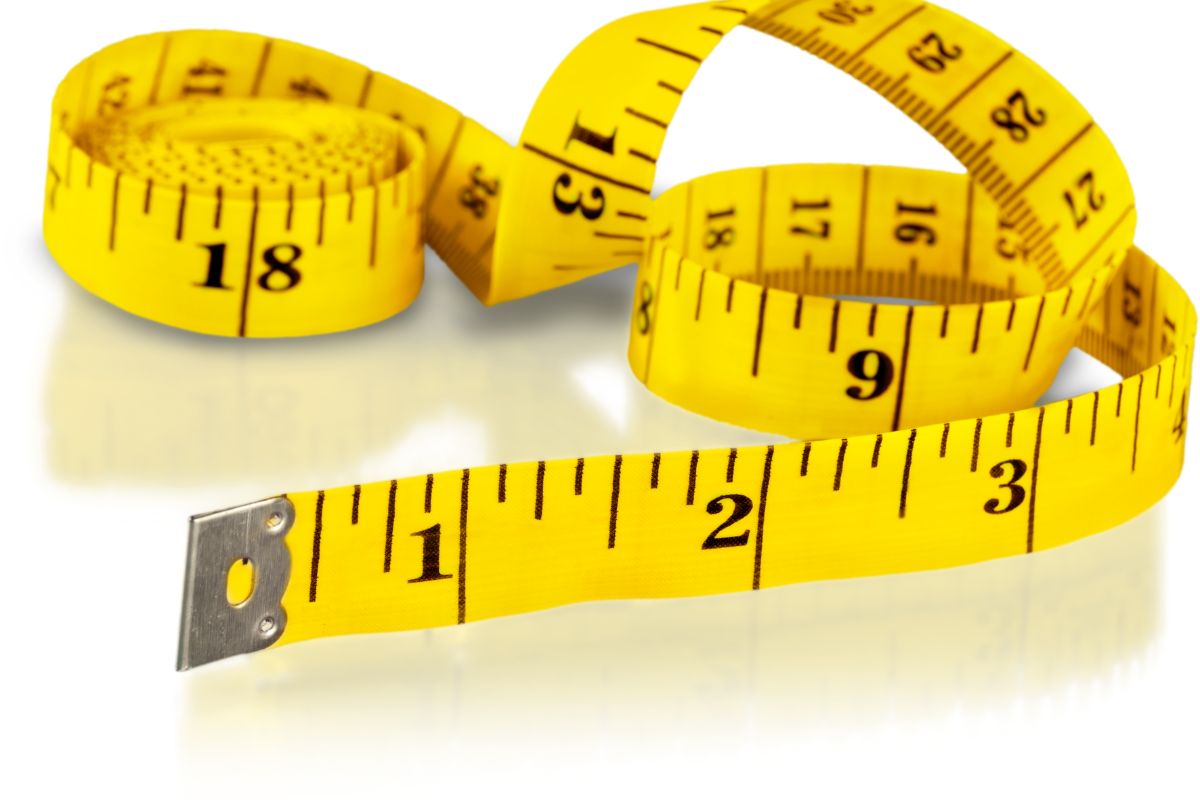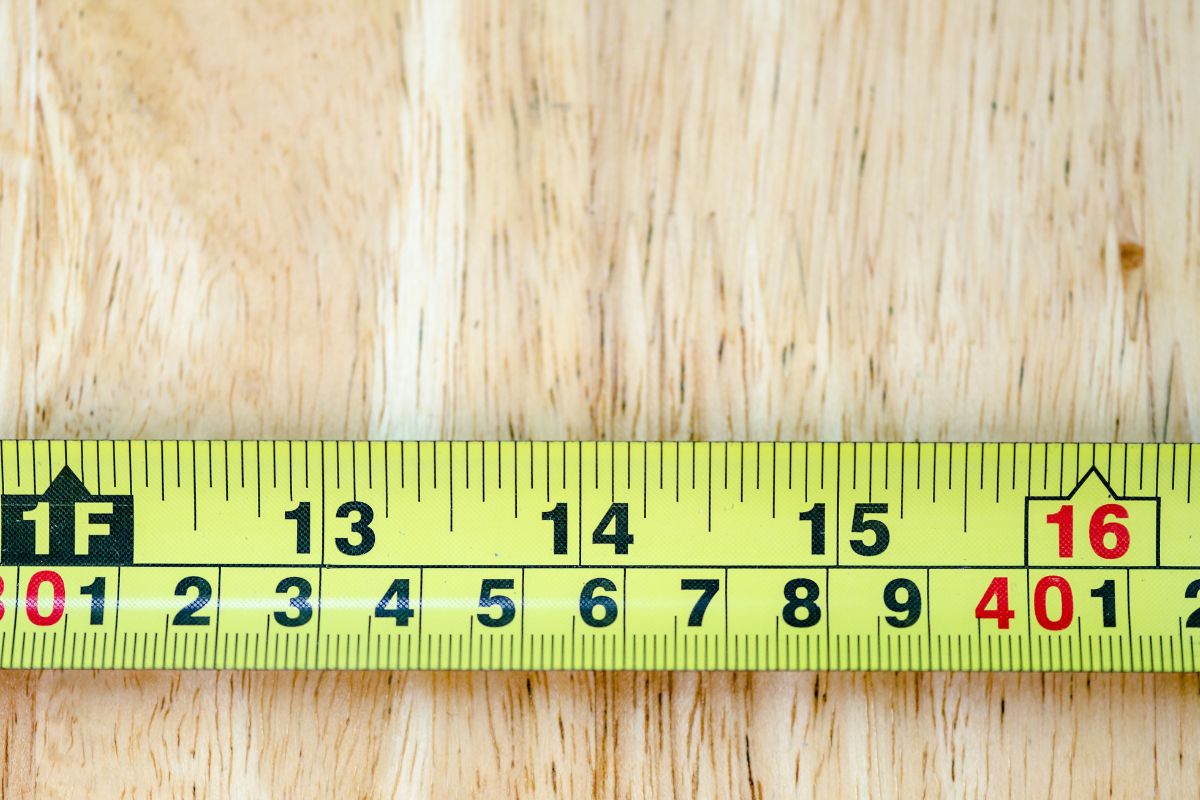If you have ever wondered how to read a tape measure properly we’re here to help. It may look simple, but there are many uses for them that are not immediately obvious.
There are many different types of measuring tapes depending on what you want to use it for.

Understanding A Tape Measure
A tape measure or measuring tape is a tool that is used to determine the size or dimensions of something.
They are typically made from metal, plastic or cloth and come in a wide variety of styles, sizes and lengths.
The term tape measure is used typically to describe a retracting measuring device used in carpentry, brick laying or general construction.
The tape itself is called the ribbon and is usually made from a thin flexible metal which can be stiff when needed but also retract well into the body or case of the tape measure.
A manual tape measure is more likely to be a folding or straight ruler used for small measurements or when a retractable tape measure is not needed.
Tape measures are not restricted to use in the construction industry but are used by decorators, tailors or anyone that needs to discern size, distance or dimensions.
Retractable Tape Measure
A retractable tape measure can be extended by pulling on the ribbon to the required length and the measurement taken.
The measurements are marked along the length of the tape ribbon in either imperial or metric units.
These are broken down into smaller units for greater accuracy. There is a locking mechanism on most retractable tape measures so that it can be used by one person.
After use the ribbon retracts into the tape measure housing. They are designed to be portable with many being small enough to fit in a pocket.
Manual Tape Measure
Manual tape measures are either rigid metal and wood or very flexible like cloth such as those used by tailors.
These are especially useful for non linear measuring as they can be wrapped around an object to take a measurement.
How To Read A Tape Measure
With the many different types of tape measure it is important to know how to read a tape measure whether it is in imperial or metric measurements.
Inches
A standard tape measure will show feet, inches and fractions of inches. There will typically be 16 marks to an inch which allows measuring accurately to within 1/16 of an inch.
However there are tape measures that have 32 to 64 marks per inch for even greater accuracy.
When measuring, place the hook notch at the zero end of the tape measure where you wish to begin measuring.
If you’re working alone this allows you to hook the end of the tape measure over the object being measured, such as a plank of wood.
Stretch out the tape measure and take the measurement. To do this look at the nearest whole inch marking to the end point and then add on any leftover measurement indicators.
Add these fractions of inches to the whole number to get the complete measurement.
Inches are marked in large bold numbers while fractions of inches are marked by indicator lines on the tape measure and may also have the fraction written on the tape ribbon.
The second largest indicator line is the half inch measurement. Between the whole inch and half inch indicator lines you will find the quarter inch measurement.
Depending on the accuracy of your tape measure the number of lines between whole inches will vary from 16 to 32 or even 64.
Millimeters
Tape measures that use the metric system use centimeters and millimeters. There are ten millimeter indicator lines to every centimeter. The smallest lines on the tape measure indicate one millimeter or 1/10 of a centimeter.
On a metric tape measure the largest numbers are centimeters and the smaller indicator lines are millimeters.
Between the whole centimeters you will find a longer line which indicates half a centimeter or 5 millimeters.
To measure with a metric tape measure find the nearest whole centimeter to the end point and then note the number of millimeters left over. Add these to the centimeters for an accurate measurement.
The millimeters should be added as a decimal. For example, if what you are measuring is 50 centimeters and there are 4 millimeter markings left over this measurement would be 50.4 centimeters.
Measuring With A Tape Measure

As well as the normal measurements on a tape measure there are other markings that are very useful. For example, on many tape measures there will be a black arrow or measurements in red at the 16-inch marks.
This is the distance between wall studs on center in most homes. It can help when you are using the studs to attach something to such as a picture hook or for securing a piece of furniture to the wall.
Another feature is the black diamonds on tape measures which are the normal spacing for roof trusses in most homes.
They are typically laid out at 19 3/16 inches and there are five of these markings for every 8 feet.
Tape Measure Tips
If you are using a tape measure alone with no one to hold one end then hook the metal notch on the edge of what you are measuring.
If there is nothing to hook the tape measure on, use a small nail or screw to fix the end of the tape measure in place.
Be careful with retracting tape measures as they can snap back quite quickly and can cause injury.
Final Thoughts
Being able to accurately read a tape measure is an important skill if you are doing any kind of home improvement, decorating or construction work.
Without accurate measurements the chances of your project being successful are diminished.
We hope this guide on how to read a tape measure has been helpful and that you can now measure with confidence.
- How To Drill Into Brick? - October 31, 2022
- How To Repair And Refinish Hardwood? - October 31, 2022
- Floetrol – What Is It? When To Use It: Complete Guide - October 31, 2022
